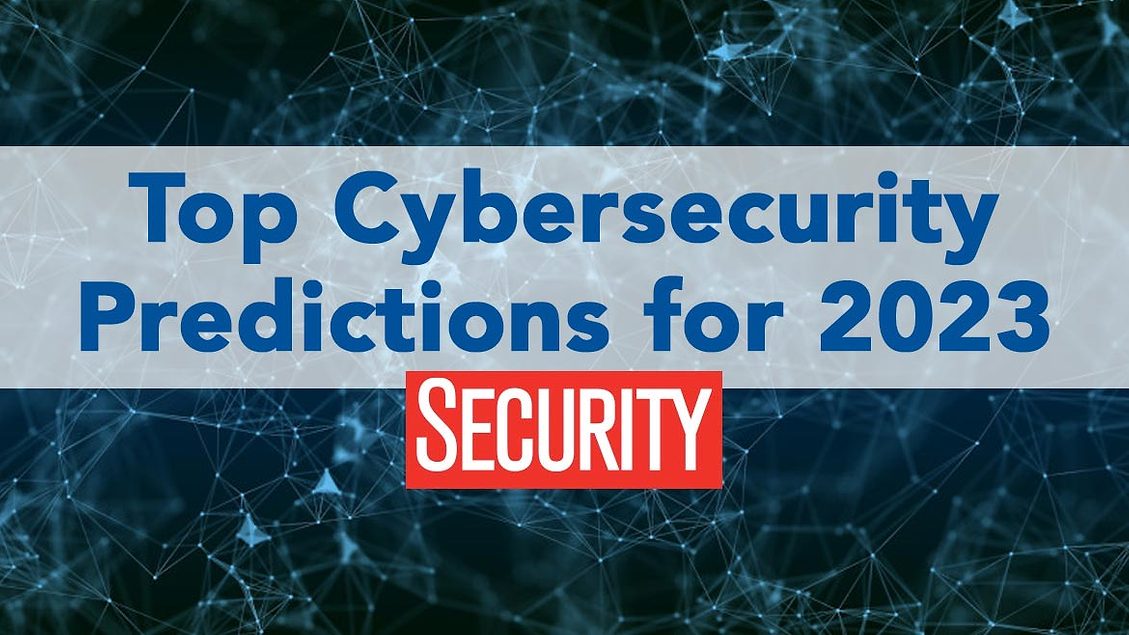The Following Frontier: Insightful Cybersecurity Predictions for the Coming Year
As we come close to the brand-new year, the cybersecurity landscape is on the verge of notable makeover. Key aspects such as the integration of sophisticated AI modern technologies, the inevitable rise of advanced ransomware, and the tightening of information personal privacy policies are shaping the future of electronic security.
Increase of AI in Cybersecurity
In the swiftly evolving landscape of cybersecurity, the integration of expert system (AI) is becoming a critical pressure in boosting threat detection and reaction abilities. AI innovations, such as maker discovering formulas and deep discovering models, are being progressively released to examine vast amounts of data and determine patterns a sign of protection threats. cyber resilience. This makes it possible for companies to proactively address vulnerabilities before they can be exploited
The surge of AI in cybersecurity is specifically considerable in its capability to automate routine jobs, permitting human analysts to concentrate on even more intricate protection problems. By leveraging AI, cybersecurity teams can reduce feedback times and boost the accuracy of risk analyses. AI systems can adjust and learn from brand-new dangers, continuously improving their detection mechanisms to remain ahead of destructive actors.
As cyber threats come to be much more innovative, the requirement for advanced remedies will drive more investment in AI technologies. This fad will likely result in the advancement of boosted safety and security devices that integrate anticipating analytics and real-time tracking, inevitably fortifying business defenses. The shift in the direction of AI-powered cybersecurity services stands for not just a technical change however a basic modification in just how organizations approach their safety strategies.
Boost in Ransomware Attacks
Ransomware strikes have ended up being a widespread danger in the cybersecurity landscape, targeting organizations of all sizes and throughout numerous industries. As we progress right into the coming year, it is anticipated that these assaults will certainly not just enhance in regularity but likewise in refinement. Cybercriminals are leveraging advanced strategies, consisting of making use of man-made knowledge and artificial intelligence, to bypass standard protection steps and make use of susceptabilities within systems.
The rise of ransomware attacks can be credited to a number of factors, including the rise of remote work and the expanding dependence on electronic solutions. Organizations are often unprepared for the progressing hazard landscape, leaving critical infrastructure prone to violations. The monetary ramifications of ransomware are astonishing, with companies facing significant ransom demands and prospective lasting functional disruptions.
In addition, the fad of dual extortion-- where assailants not only encrypt data however likewise threaten to leak delicate info-- has acquired traction, further persuading targets to abide with demands. Because of this, businesses have to focus on robust cybersecurity steps, including normal backups, employee training, and incident feedback planning, to reduce the threats related to ransomware. Failure to do so could bring about ravaging consequences in the year in advance.
Advancement of Data Personal Privacy Rules
The landscape of data go to my blog personal privacy guidelines is undergoing substantial makeover as governments and companies respond to the raising issues bordering personal information security. In recent times, the application of extensive structures, such as the General Data Security Regulation (GDPR) in Europe and the California Customer Privacy Act (CCPA) in the USA, has actually set a criterion for stricter personal privacy laws. These guidelines emphasize customers' rights to manage their information, mandating transparency and liability from organizations that gather and refine personal info.

Additionally, companies will need to enhance their compliance methods, purchasing advanced technologies and training to safeguard delicate details. The advancement of information privacy policies will not just influence exactly advice how services operate but also form customer expectations, fostering a society of trust fund and protection in the electronic landscape.
Growth of Remote Work Susceptabilities
As organizations continue to welcome remote job, vulnerabilities in cybersecurity have significantly pertained to the leading edge. The shift to adaptable job plans has actually revealed vital gaps in security methods, especially as employees accessibility sensitive data from diverse locations and tools. This decentralized job environment develops a broadened attack surface area for cybercriminals, who make use of unsecured Wi-Fi networks and individual gadgets to penetrate business systems.

To minimize these vulnerabilities, organizations have to prioritize detailed cybersecurity training and apply robust safety structures that encompass remote work situations. This consists of multi-factor authentication, regular system updates, and the facility of clear methods for information access and sharing. By attending to these susceptabilities head-on, firms can foster a much safer remote workplace while keeping operational resilience when faced with progressing cyber hazards.
Advancements in Hazard Discovery Technologies


Proactive hazard discovery has come to be a foundation of modern-day cybersecurity methods, reflecting the immediate requirement to neutralize progressively sophisticated cyber dangers. As organizations encounter a developing landscape of susceptabilities, developments in hazard detection modern technologies are vital in mitigating risks and improving content security poses.
One notable pattern is the assimilation of expert system and artificial intelligence into danger discovery systems. These technologies make it possible for the evaluation of large quantities of information in real time, enabling the identification of anomalies and possibly destructive activities that may escape traditional safety actions. Additionally, behavioral analytics are being carried out to develop baselines for normal individual task, making it less complicated to spot variances a measure of a violation.
Moreover, the increase of automated danger knowledge sharing systems promotes collaborative defense efforts across markets. This real-time exchange of info boosts situational recognition and increases response times to emerging risks.
As organizations continue to buy these sophisticated innovations, the efficiency of cyber defense reaction will dramatically boost, encouraging protection groups to remain one action ahead of cybercriminals. Eventually, these developments will play an important role in shaping the future landscape of cybersecurity.
Conclusion
In summary, the upcoming year is anticipated to witness transformative growths in cybersecurity, driven by the combination of AI innovations and a noteworthy increase in ransomware attacks. As information personal privacy guidelines end up being much more stringent, companies will certainly need to enhance conformity approaches. The continuous difficulties positioned by remote work susceptabilities require the implementation of durable protection procedures and extensive training. In general, these evolving characteristics highlight the vital value of adapting to an ever-changing cybersecurity landscape.